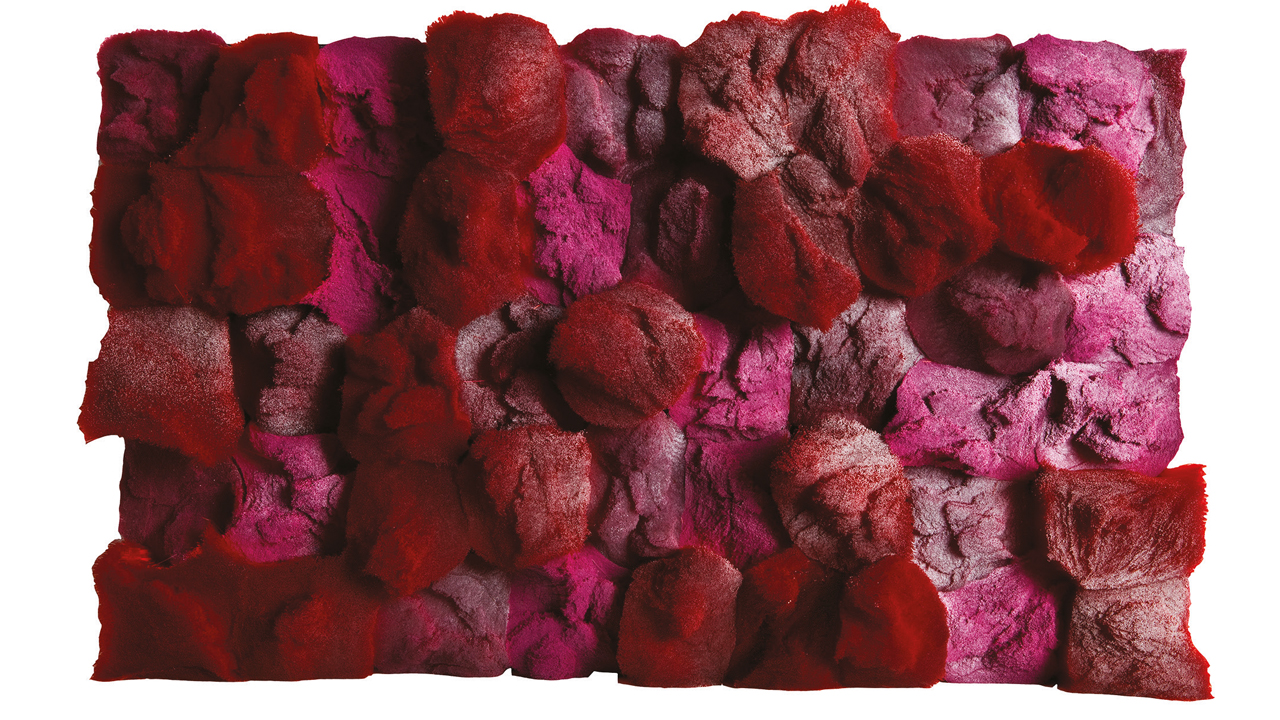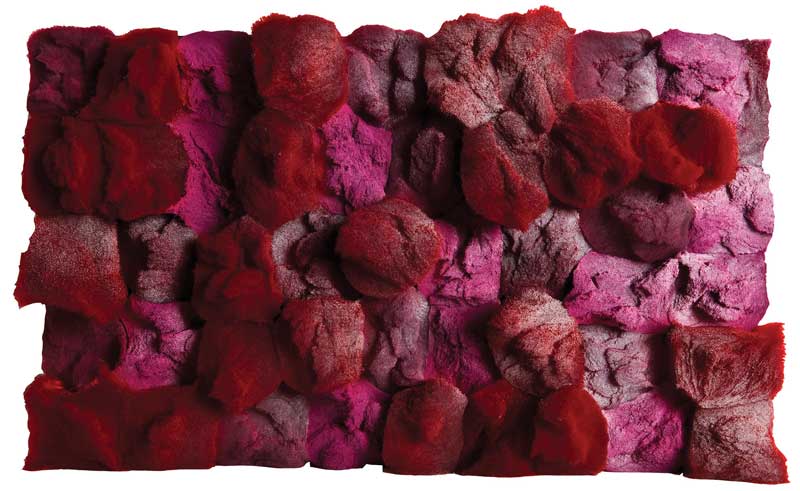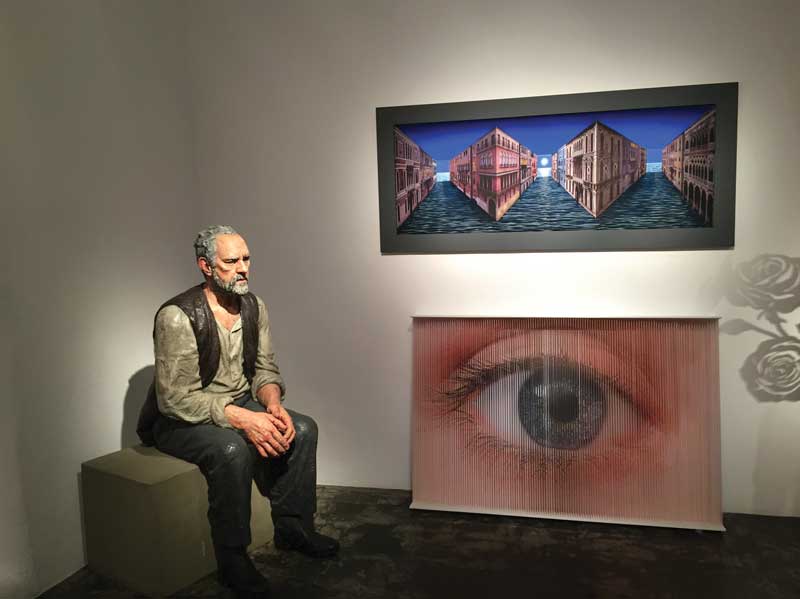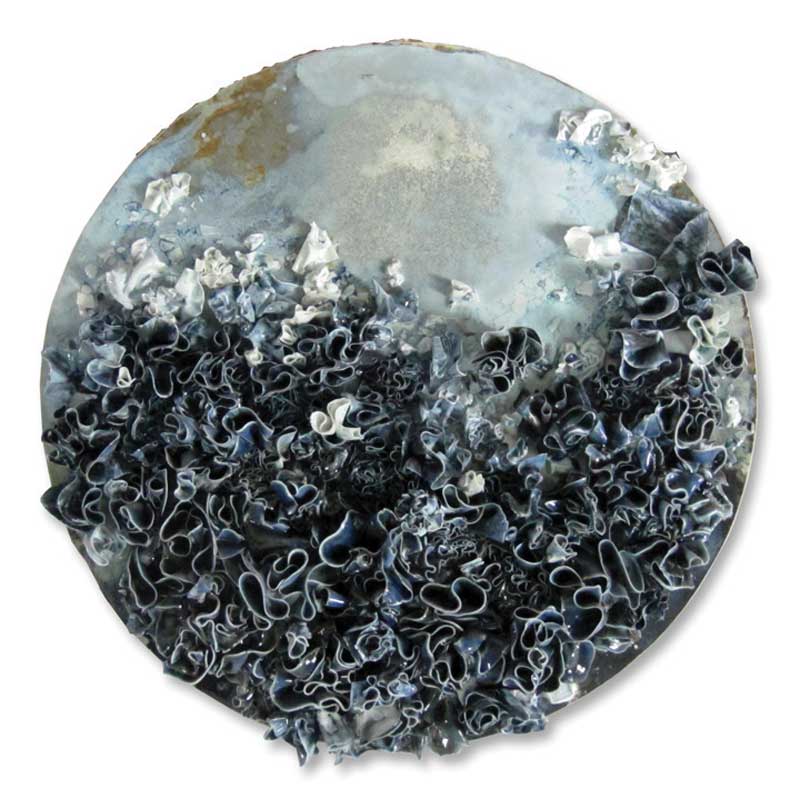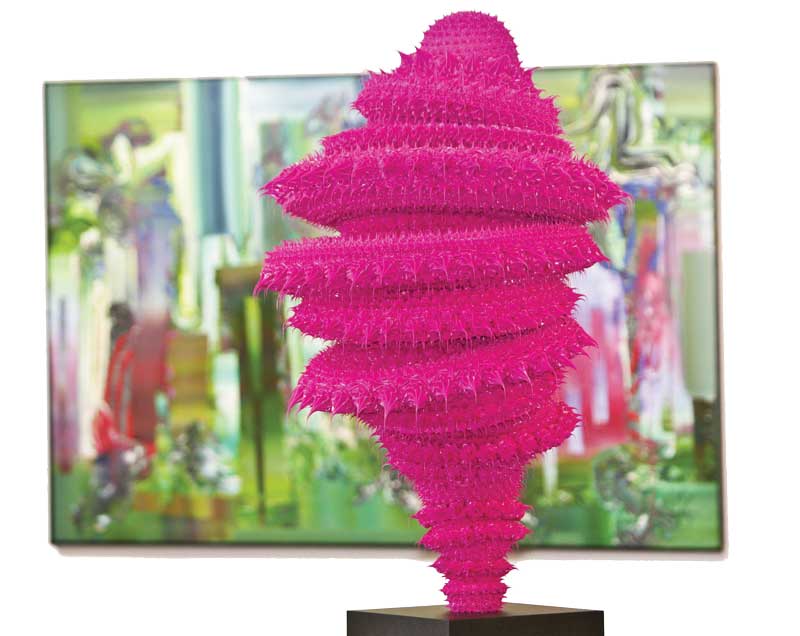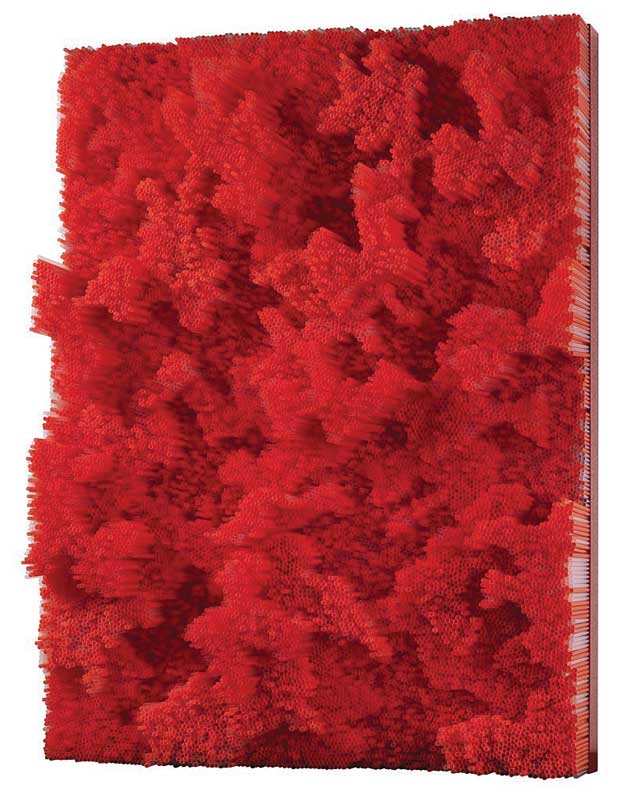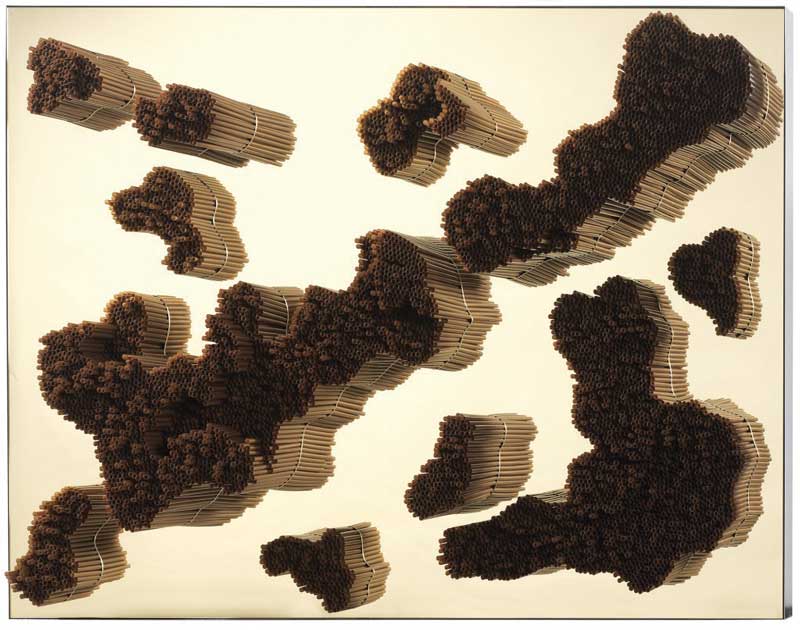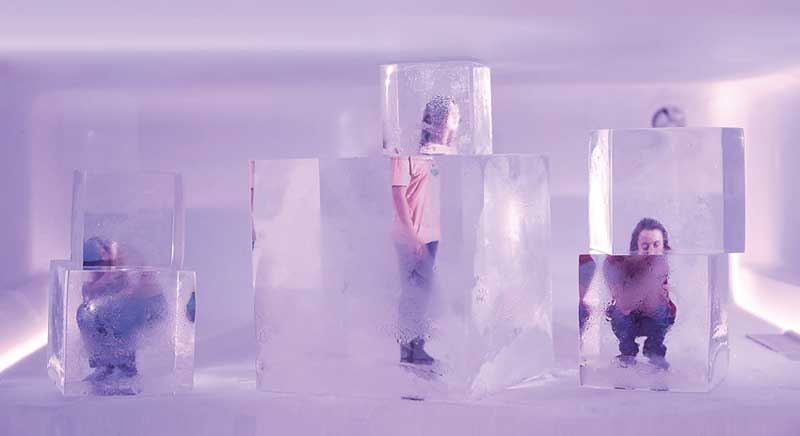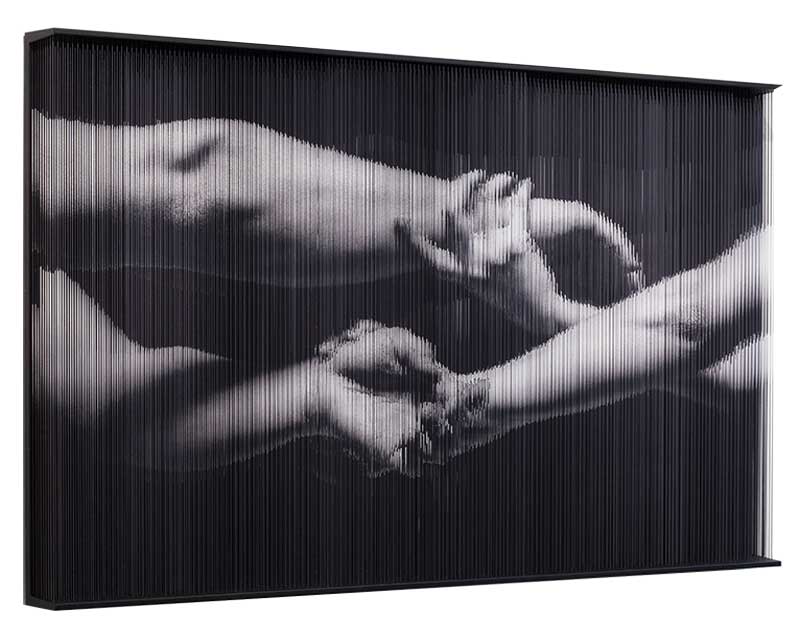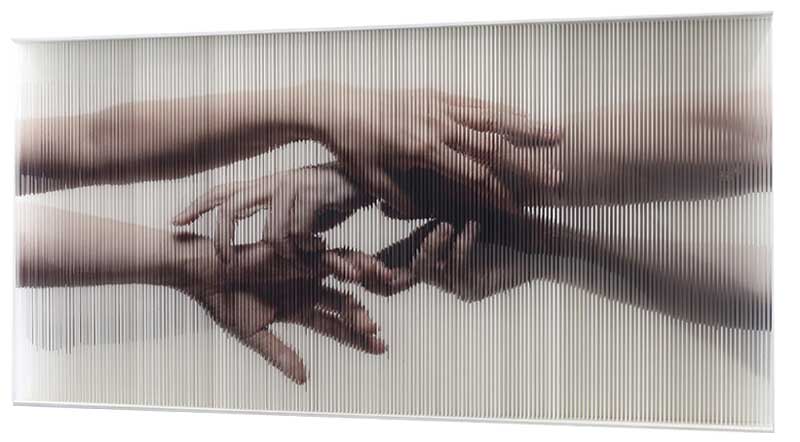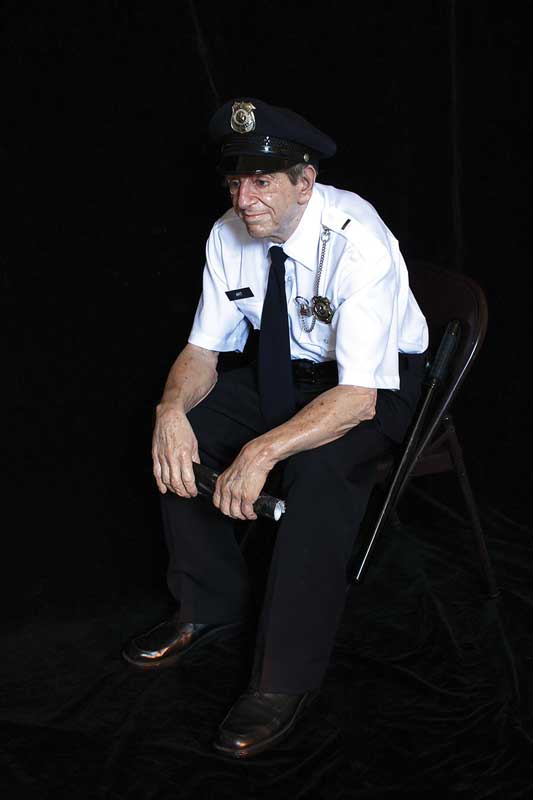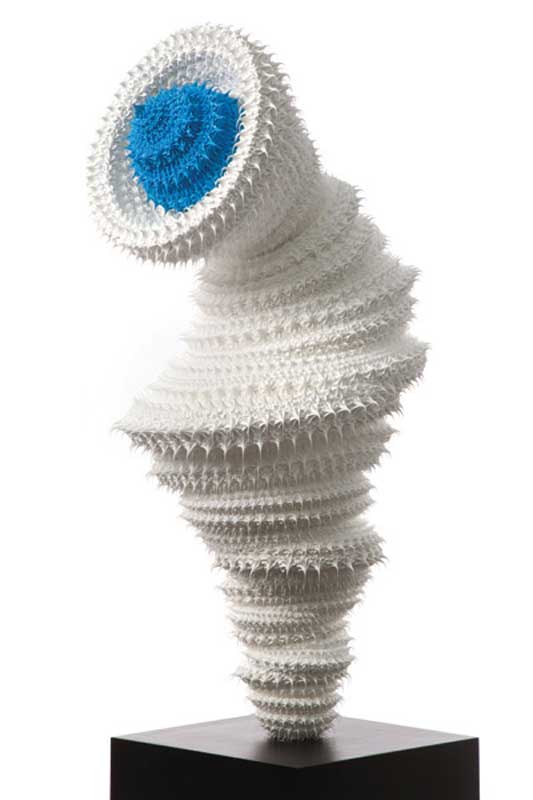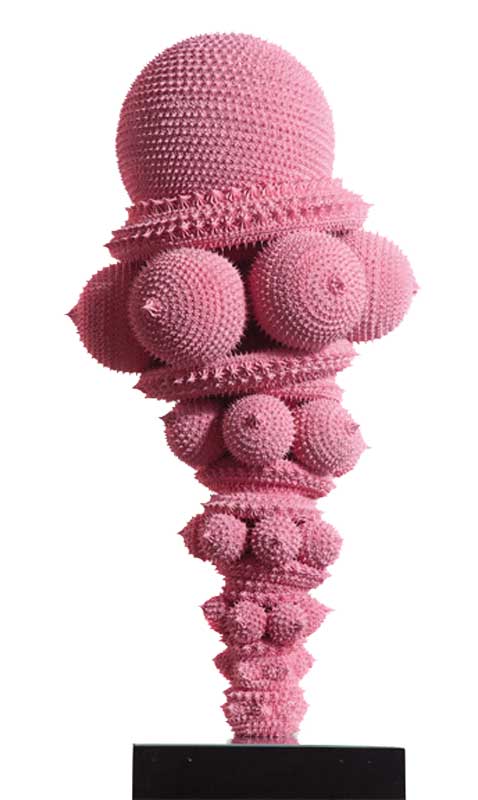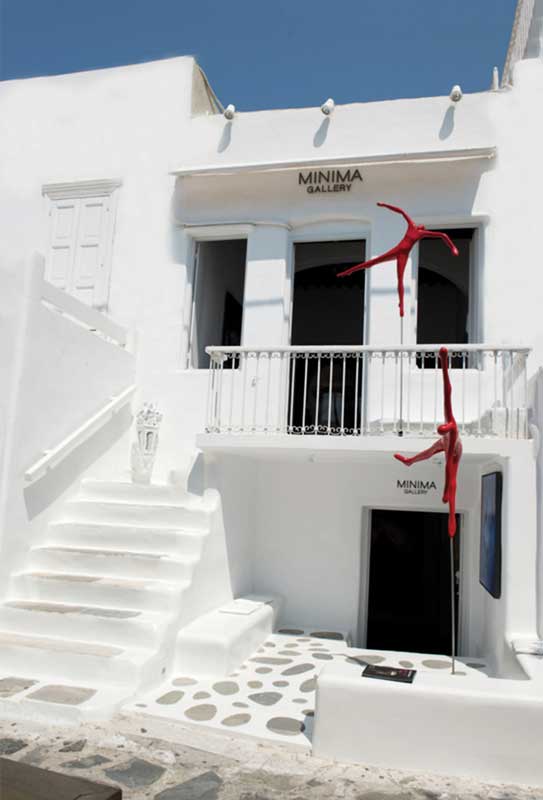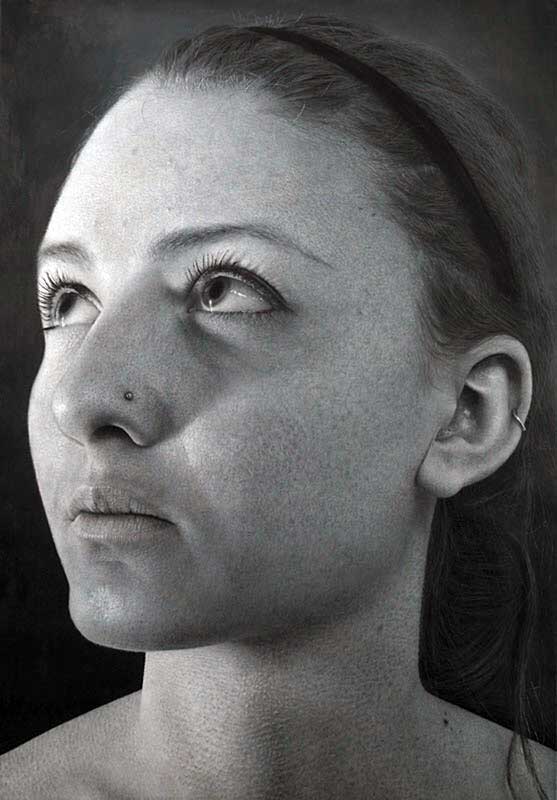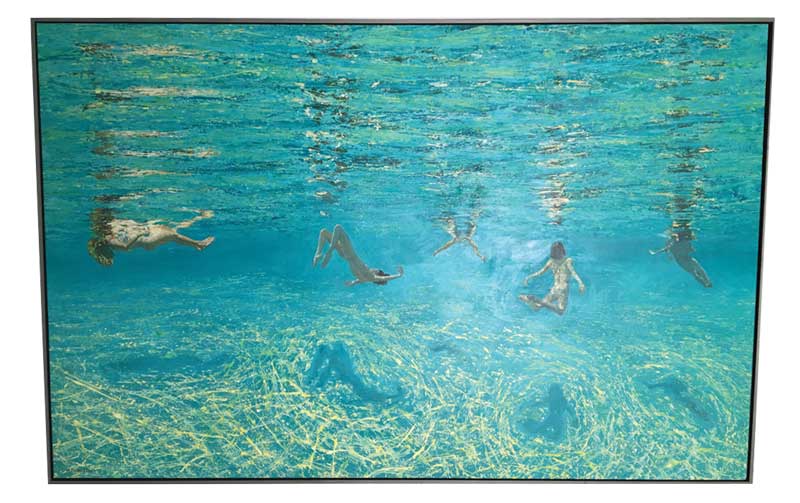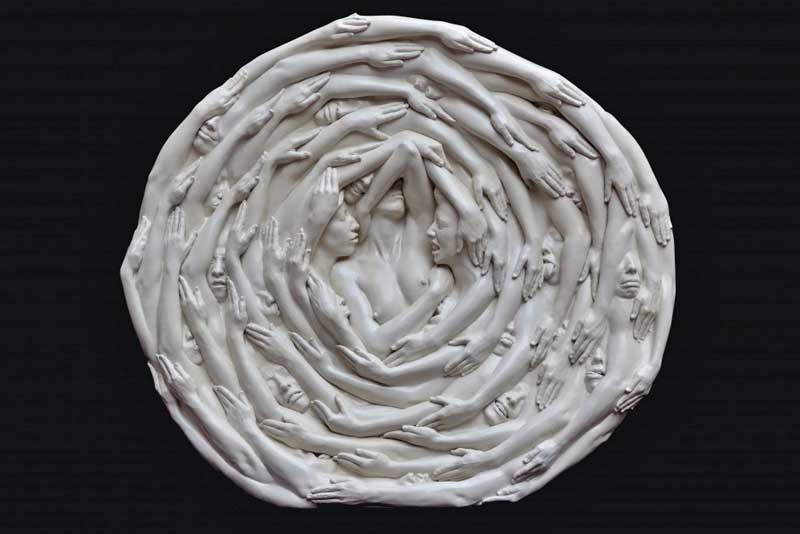MMykonos also offers an enriching experience for visitors who are eager to find a connection with culture. Right now we recommend two highly appealing art galleries that currently exhibit the works of distinctive artists of the plastic arts, representatives of contemporary styles.
RARITY GALLERY
It is located downtown Mykonos and offers a unique and unmatched adventure. Walking along the narrow streets of Mykonos, one would never suspect what lies behind the modest white walls of the gallery. It’s like crossing a threshold into a parallel artistic universe, where all previous artistic experience is momentarily forgotten. Since 1995, this gallery has succeeded in transforming this experience into a creative opportunity backed by prominent names in the artistic community. All five senses play a fundamental role in this exhibition because each piece requires it.
The artists here displayed come from multiple degrees of popularity, nationalities and fields. Paint, photography and sculpture reach new levels, higher dimensions, with artists such as Marc Sijan, Roberto Bernardi and Patrick Hughes along with artists of more recent generations like Johannes Cordes, Jan Mikulka, Marcus Levine and Jaime Valero, among others. It’s a parallel world that reveals innovative ways of artistic performance, all of which have been carefully selected. Some of the crucial names in this special offer are:
Zhuang Hong Yi
This is one of the most impressive artists in the 2016 summer exhibition. He is known for merging sculpture and painting, and this grants his pieces a tridimensional effect. Just like the rest of the artists in the gallery, Zhuang’s work requires visitors to adopt a role of active participants within the painting; this is the case of his piece Rose Petals in Rice Paper. When standing right in front of it, the spectator/participant can appreciate a nearly uniform Mexican pink color; from the right, it shows three shades of blue: pastel blue, sky blue, and navy; the left side provides three shades of purple: lavender, dark purple and violet. It seems like magic to achieve this medley of colors within a single space, especially in such a subtle, truly beautiful, brilliant, elegant and precise manner that toys with an audience that cannot figure out how it works.
Born in ShiChuan, China in 1962, Zhuang works with colors, themes, and even resources like rice paper, paper flowers, etc., that are typical in Chinese art. In the 90s, Zhuang moved to the Neatherlands, from where he borrows different colors and techniques; this results in a fusion of Oriental art with a trace of impressionism. His love for nature, his impressionist influence, his lovely simplicity, the symphony of colors and shapes flawlessly carried out in such a human way makes it possible to recognize his style in the acrylic.
Francesca Pasquali
Pasquali’s work is characterized by the materials she uses: unaltered plastic straws, polyurethane foam, balloons and plastic cups. Her work can be defined as “visual kinetics” because it is a study on the movement on the movement and space of these materials as well as the place they’re adapting to. There is a piece made out of plastic straws of different lengths, all red, arranged in a way that makes it look like an enhanced type of bacteria. This effect, seen from afar, along with the spherical quality of the straws, forces the spectator to look closely and inspect the piece hoping to understand what constructs it and how it is constructed. The intriguing connection between the organic and the industrial goods is a little ironic because it creates something that is apparently organic with inorganic objects.
Roberto Bernardi
The amount of detail that Bernardi displays in his work is extraordinary, shocking and magnificent. He is one of the most renowned artists in hyperrealism, an artistic movement that aims to match reality. Bernardi achieves this so flawlessly that the participant cannot tell if it is indeed a painting or a photography—even when looking closely, they won’t be sure it is an oil painting. His themes focus on ordinary objects: a dishwasher, sinks, fruit, magazine stands, vending machines, women’s shoes, etc.
The detail in which he presents plastic wraps and glass candy containers, along with his dominion of lighting and flection in his work, are key factors as to why he has become one of the greatest representatives and exhibitors of hyperrealism around the world.
Hong Sung Chul
Hong’s tridimensional pieces are the product of a brilliant mind that devised an innovative technique that only he can execute in such a perfect way; it consists on printing images on elastic ropes, each one with a particular combination of colors that create an image when arranged together. He mostly portrays the human figure, let it be two pairs of hands holding on to one another over what seems to be a black void, or a woman in a white shirt with her hands tied up with barbed wire. His technique involves the attendee, who must go around the piece to understand how it works and to study the different angles the tridimensional effect offers. As a result we have an image that appears homogeneous at first glance, but at the same time it seems distorted and fragmented if looked at closely.
Marc Sijan
The humanity and realism with which Sijan works is otherworldly, to such extent that it is as though his sculptures have moved, or are about to. The detail is so immaculate that visitors won’t notice that the police officer in the corner of the room isn’t a security guard, but part of the exhibition at the Rarity Gallery. Sijan, famed hyperrealist sculptor, describes his work as a tribute, a narrative of daily life and the human beings that partake in it. When looking at one of his sculptures, it is possible to appreciate every pore, wrinkle and hair; he highlights both the beauty and the imperfection of the human body. Such precision and detail lead Sijan to spend up to a year working on a single piece. He has had fifty solo exhibitions and his work has been featured in permanent collections in more than thirty museums around the world.
Anke Eilergerhard
Since 2004, with her unique and special technique, Eilergerhard has been working on peculiar sculptures that seem to be in motion, pausing just for a moment so the spectator can appreciate it before it succumbs to the power of gravity. Silicone is used in such a way that it seems to be melting, but the sculptures manage to overcome the gravitational laws. They could be defined as an illusion of movement within the static. But even when they oppose gravity, the sculptures are fragile. Each part supports each other by mere force. Eilergerhard’s sculptures are a contradiction between the vulnerable and the invincible. The audience should go around their structures to fully appreciate them.
MINIMA GALLERY
Since the 90s, this gallery, located in downtown Mykonos as well, harbors other kinds of surprises behind its white walls. Local and international works of art are exhibited here. Greek artists offer a new concept of Classical art. Their work includes landscapes, abstract pieces, photography and sculpture; it is a great opportunity to experience different genres. Minima Gallery’s motto is that the value of the piece is the piece itself, and not the artist responsible for it. Therefore, their focus doesn’t lie in whatever fame the artist might gain; instead, they focus on the influence of art. To exemplify this concept, here are some of these artists and their works.
Antonios Titakis
The amazing work of Antonios Titakis consists on portraits and landscapes, like a soft wave at the beach. He showcases his inborn, profound talent and his capacity to capture details in extraordinary realness. In his piece of a countenance, called Silent Eyes, even after studying every detail, the observer will question whether they are looking at an oil painting or a black and white photograph. His method is flawless in every sense of the word. Another exquisite example is his piece Seascape, where he manages to transmit the motion of the waves, and he does so in a delicate way: we can almost smell the ocean and see the wave break, and even feel the humidity and the splashing foam, and the smaller waves at the back, created by the wind. It is a fragile and unique work of art, testament of his great talent.
Maria Filopoulou
Filopoulou is another discovered treasure at Minima Gallery. Mirroring daily life in Mykonos, her works unfold green and blue shades characteristic of water. There is a touch of impressionism in her work, through which she manages to capture the simple life of people at sea: figures swimming, women climbing waterfalls, or sunbathing at the shores. Nude bodies come to life within the frames and create a liberating feeling, intense desire to dip your toes in the water. Freedom, peace and happiness are important elements in Filopoulou’s work, and Mykonos is the ideal place to exhibit these paintings because the audience, after visiting the gallery, will be able to enjoy the beaches and feel like the figures in one of the paintings.
Alexandros Yiorkadjis
His philosophy is that every action in the physical world starts with an individual internal process, manifested through the universal human language: emotions. His goal is to create a relationship with the spectator—a relationship that causes a range of reactions, from the feelings the piece produced in them, to the questioning of their own existence.
Yiorkadjis is one of the most significant sculptors in Minima Gallery. His pieces are often bold and defiant. He describes his work Between the Being and to Be as the eternal human struggle to relate to, and understand, their own feelings. He captures frustrated expressions, others that seem to be screaming; there are arms covering their own faces or others’. In contraposition, some faces represent self-realization—arms that rest peacefully or that reach for the sky, with only one face showing self-consciousness and self-awareness. His use of aluminum and wax is extraordinary; it creates an unparalleled, self-defiant experience.
Text: Tala Chebaro ± Photo: Anke Ellergerhard / Francesca Pasquali / Hong Sung Chul / Marc SIjan / Roberto Bernardi / Zhuang Hong Yi / MINIMA GALLERY / ZASR / AZAMR / AMV / MINIMA GALLERY

